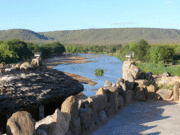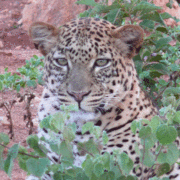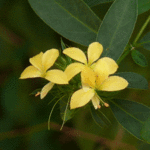WILD PORTRAITS: Wild Animal, Bird & Insect Images > RESIDENT BIRDS: Photographed on the property [2007] (188)
-
Marabou Stork Coming In to Land (a) (22 October 2007)
We watched a buffalo carcass being devoured by crocodiles just upstream from our house. Of course, this attracted the Marabou Storks, the none-too-pretty scavengers of Africa. They look impressive in flight, though, soaring to thousands of feet, and inspiring awe with their huge wingspan as they come in to land. As the day went by, more and more Marabous gathered around the carcass. Read the whole story... -
Marabou Stork Coming In to Land (b) (22 October 2007)
A Marabou Stork coming in to land, hoping to scavenge a morsel or two from the buffalo carcass being devoured by crocodiles just upstream from our house. -
Marabou Stork Coming In to Land (c) (22 October 2007)
A Marabou Stork coming in to land, hoping to scavenge a morsel or two from the buffalo carcass being devoured by crocodiles just upstream from our house. -
Marabou Stork Coming In to Land (d) (22 October 2007)
A Marabou Stork coming in to land, hoping to scavenge a morsel or two from the buffalo carcass being devoured by crocodiles just upstream from our house. -
Marabou Stork Landing (22 October 2007)
A Marabou Stork landing near the buffalo carcass being devoured by crocodiles, hoping to scavenge a morsel or two. -
Marabou Stork Standing in River (22 October 2007)
A Marabou Stork standing near the buffalo carcass being devoured by crocodiles, hoping to get the opportunity to scavenge some left-over carrion. -
Marabou Stork On The Scrounge (22 October 2007)
On the scrounge: A Marabou Stork walking towards the buffalo carcass being devoured by crocodiles. -
Yellow Billed Stork Landing (22 October 2007)
I like this shot of a Yellow Billed Stork coming in to land, for the shape of the wing feathers is mirrored by the fan-like leaves of the doum palm. I took this photo while we were watching a group of crocodiles devour a buffalo carcass in the river just upstream from our house. -
Yellow Billed Storks Preening (22 October 2007)
While we were watching a group of crocodiles devour a buffalo carcass in the river just upstream from our house, I also photographed some of the other birds and animals around and about. The Yellow Billed Storks were more interested in preening themselves on the mudflats, although one or two did venture over to the carcass to see if they could catch any fish which were feeding on the dead buffalo. -
Marabou Stork in Evening Light (22 October 2007)
Looking downstream from where we were photographing a group of crocodiles feeding on a buffalo carcass, I took this shot of a Marabou Stork, taking a break from the action, and looking uncharacteristically attractive in the beautiful evening light. -
Yellow Billed Stork in Evening Light (22 October 2007)
This Yellow Billed Stork looked gorgeous in the late evening light, a welcome diversion from the group of crocodiles devouring a buffalo carcass just near our house. -
Dikkops (23 October 2007)
There is always at least one pair of Water Dikkops (also known as Water Thick-knees) by the river below the house. They are mainly nocturnal, so sleep by day on one of the rock islands or sandbars by the river's edge. They have a beautiful, almost mournful call which you hear at night, and sometimes in the early hours of the morning or late evening. Read more news fom October 23rd 2007... -
-
-
Hunters Sunbird feeding in thicket behind house (23 Oct 07)
See what else happened on 23rd October 2007 -
Hunters Sunbird feeding in thicket behind house (23 Oct 07)
See what else happened on 23rd October 2007 -
Hunters Sunbird feeding in thicket behind house (23 Oct 07)
See what else happened on 23rd October 2007 -
Hunters Sunbird feeding in thicket behind house (23 Oct 07)
See what else happened on 23rd October 2007 -
Hunters Sunbird feeding in thicket behind house (23 Oct 07)
See what else happened on 23rd October 2007 -
Hunters Sunbird feeding in thicket behind house (23 Oct 07)
See what else happened on 23rd October 2007 -
Hunters Sunbird feeding in thicket behind house (23 Oct 07)
See what else happened on 23rd October 2007 -
Village Weaver in Commiphora Tree (24 Oct 07)
The Village Weavers (also known as Black-headed Weavers) were amongst the many birds feeding off the fruiting Commiphora trees on and surrounding the Hippo Lawn. News from this day... -
Fork-tailed Drongo in Commiphora tree (24 Oct 07)
Living up to its name, with its deeply forked tail! News from this day... -
Drongo and Weaver Bird squabbling (24 Oct 07)
Some birds are natural bullies, like this Drongo - what on earth was this Village Weaver doing to upset it so much? News from this day... -
-
-
-
-
-
Long-tailed Glossy Starling feeding on Commiphora fruit (24 Oct 07)
The early fruiting commiphora africana (helped along by our watering before the rains) was a draw for the starlings too. News from this day... -
-
-
-
-
-
-
-
-
-
-
-
-
-
-
-
-
-
-
-
Green-backed Heron (2 Nov 07)
A Green-backed Heron in its familiar hunting ground, on the river's edge just below our balcony. Behind, you can see a couple of Nile Cabbage heads - this is a voracious weed which has caused many problems in Kenya's inland water bodies, for it reproduces at an astonoishing rate, and before you can blink, it takes over and suffocates all other species in its environment. It lives in stagnant water so this piece must have been washed down from a lake or reservoir further upstream. In just a day of lying here, it has multiplied from one "cabbage head" to three. It will not survive here though (thank goodness), and will be washed away as soon as the river flow catches it. Read more news from 2nd November 2007... -
Grey-headed Kingfisher (2 Nov 07)
I snapped this shot of the Grey-headed Kingfisher sitting in one of its usual perches in 'The Peaceful Place' (you can almost always find it sitting on one of two or three familiar perches - it's obviously a creature of habit). Read more news from 2nd November 2007... -
Spur-winged Plover nest near house (2 Nov 07)
The Spur-winged Plovers have decided to nest on a low sand island in the middle of the river...please don't tell me this is a good idea. You can just see the nest in the foreground of this shot. The nest consists of a few twigs haphazardly arranged on the sand. Read the whole story here... -
Spur-winged Plover eggs in nest near house (2 Nov 07)
A close-up of the beautiful "ink-splattered" eggs laid by the Spur-winged Plover, in their little twig nest made right on the sand. Read the whole story here... -
Low angle: Plover nest on sand island near house (2 Nov 07)
This low-angle shot illustrates the position of the Plovers' nest on the sand island just upstream from the house (we can watch proceedings easily from our balcony). The sticks arranged in a triangular shape look like they have been deliberately placed there by someone, to protect the nest, but in fact, this is where the river dropped these sticks, and the Plovers decided that a nest in the middle of them would be well-protected...the fact the sticks and the nest are lying on a very low sand island in the middle of a river that is prone to flash floods is another matter...Read the whole story... -
Spur-winged Plover returns to its nest (2 Nov 07)
In the cooler times of day, the Plovers often leave the nest uncovered for fairly long periods at a time (allowing me to get the photos, above). Here you can see one of the parents returning to the nest. (During the heat of the day, the Plovers will not leave the nest unattented for more than a few seconds at a time, while the parents exchange "sitting duties". Read more about "our" Plovers here... -
Spur-winged Plover crouches on nest (2 Nov 07)
When the sitting bird crouches low on the nest, it's difficult to see it, even from this close...Their colours make them superbly camouflaged in this riverine environment. Read more news from 2nd November 2007... -
Nest Hole in Tree (2 Nov 07)
This hole in a tree in 'The Peaceful Place' is obviously being used as a bird nesting hole - you can see the fresh scrape marks at the entrance confirming this. We're guessing from the size of the hole (which is relatively large) that it might be the Orange-bellied Parrots, but we can't be sure as we haven't seen any bird go in or out of the hole yet. Read more news from 2nd November 2007... -
-
-
-
-
Guinea Fowl & Impala on riverbank (3 Nov 07)
The Helmeted Guinea Fowl and the Impala were both enjoying the green grass shoots on the riverbank this morning. See what else happened on this day... -
Guinea Fowl & Plovers' Nest (3 Nov 07)
The Helmeted Guineafowl almost engulfed the two plovers, whose nest you can just see on the sand island behind. See what else happened on this day... -
Low angle shot of Plovers' nest (3 Nov 07)
The Plovers' nest (again). See what else happened on this day... -
Four eggs! (3 Nov 07)
The Spur-winged Plovers have laid a fourth egg! See what else happened on this day... -
Male Von der Decken Hornbill (3 Nov 07)
The Von der Decken Hornbills were feeding on the commiphora berries in the thicket behind the house this morning. Here is the male with his large red and yellow beak...See what else happened on this day... -
Female Von der Decken Hornbill (3 Nov 07)
Here is the smaller female Von der Decken Hornbill, with her black beak...See what else happened on this day... -
-
Von der Decken Hornbill feeding in commiphora tree (3 Nov 07)
The Hornbill was feeding on the red commiphora berries, picking them off the branches and then throwing them in the air in order to get them into his big beak, before swallowing them. See what else happened on this day... -
-
-
-
-
-
-
-
-
-
-





